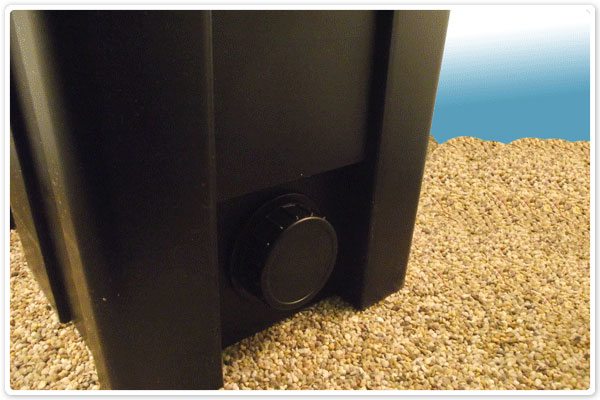Return to the PondKraft Box Filter product page.
PondKraft Box Filter Information
The brand new range of PondKraft products that we have sourced at Bradshaws Direct are brilliant quality and value, the PondKraft box filter is no exception. We decided to supply you with our own range of products as we know times are hard so value is of the upmost importance to our customers. The PondKraft box filter combines three different filtration processes, the first of these being a UVC (ultraviolet clarifier), the water then passes through foam layers and finally into biological media in the bottom of the filter. These three processes are vital in maintaining a healthy pond for all wildlife and also making sure its not green. Box filters are extremely good at keeping ponds clean due to the large surface area of the media contained inside them, and this is why people select them over pressurised filters.
Available PondKraft Box Filter Models
| PondKraft Box Filter | Goldfish Pond Size Ltr | Max Flow lph | Outlet Size | UV Wattage | Dimensions mm |
|---|---|---|---|---|---|
|
PondKraft 6000 |
4000 Litres |
3000 Litres |
50 mm |
9 Watt |
380-280-437 |
|
PondKraft 9000 |
6000 Litres |
4500 Litres |
50 mm |
11 Watt |
380-280-480 |
|
PondKraft 12000 |
8000 Litres |
6000 Litres |
70 mm |
18 Watt |
560-380-437 |
|
PondKraft 18000 |
12000 Litres |
9000 Litres |
70 mm |
36 Watt |
650-460-460 |
|
PondKraft 25000 |
16500 Litres |
12500 Litres |
70 mm |
36 Watt |
788-530-510 |
Why should I use a filter on my pond? Why is pond filtration so important? How do I set up a Pond Filter?
Nitrogen Cycle: All ponds have a natural cycle of friendly and harmful bacteria, this is known as the nitrogen cycle. This cycle is perfectly normal and in a nature pond due to either low or no stocking levels of fish means that there is less ammonia being produce through either fish waste or from overfeeding. Ammonia which has been created can be easily dealt with by naturally occurring friendly bacteria within your pond. If however you're intending to stock the pond with fish it is vital to use a filter such as the PondKraft box filter, as the final process of the filter is biological filtration, here small plastic pieces allow a vast amount of friendly bacteria to cultivate on their huge surface area. Naturally occurring bacteria help to turn ammonia into nitrite, nitrite is however still dangerous to fish in high levels so, the friendly bacteria inside your filter change the nitrite into plant food which is nitrate, resulting in a healthy pond.
How to help start your pond and filter?: Most people who have garden ponds however want to have fish, and usually pretty quickly, without a filter your pond will not be able to support the introduction of fish in any great numbers. When installing your PondKraft box filter to get it ready to introduce fish, the best thing to do is buy not only a declorinating product (this takes all the chlorine out of the tap water making it safe for fish) but also a filter start product (filter start products contain millions of live friendly bacteria to help kick start the nitrogen cycle within the pond) once you have introduced both products to the water (making sure following the manufacturers instructions on dosage) leave the pond to settle for a week and also leave the UVC switched off (UV radiation can affect the cultivation of new friendly bacteria, after a week too much bacteria will have been produced for the radiation to have an effect).
Introducing fish: After the pond has been left running for a week turn the UVC on, this will sort out any green water that may have built up over the week, it is best now to leave the pond for another week (so two weeks in total with no fish). Once it has been left for the two weeks, it is perfectly safe to start introducing fish gradually to your pond. For more information on how best to introduce fish to your pond please click here.
Special Features Of Your PondKraft Box Filter
UVC Clarifier: Algae is one of the most common problems to face a pond owner, the mixture of fish producing waste and floating fish food being uneaten puts a high amount of nutrients into your pond. This produces as an end product from filtration lots of nitrate (plant food) combine all this with sun light and not many plants (as tends to be the case in garden ponds), allows the algae cells to photosynthesize at will creating a nasty pea green soup looking pond. A UVC is designed to counteract this process, and is one of the most important introductions to a pond and its filtration setup.
With the PondKraft Box Filter water is preferably sent from a filter pump (it's better to use a filter pump as they accept bigger solids to be taken through their cage, which stops the pump from blocking up and means a cleaner pond) into the UVC that is located in the lid of the PondKraft filter box. Here a UV light emits radiation, and in a similar process to sunburn damages the outside layer of the algae cells, the algae cells then become sticky and can clump together (flocculate). These cells are now much bigger in size than they were before, they have been clumped together and are able to be removed by the mechanical stage of the PondKrafts' box filters filtration.
Changing Your UV Bulb: A UV bulb will last you from late March until late October, when usually we have some sunshine! UV bulbs will light up for longer than the 7000 hours they state as their life span, but after this time they will no longer be working to their maximum efficiency so need to be replaced and this should be done every spring.
Instructions for Changing Your UV Bulb (PondKraft Box Filter - New Version)
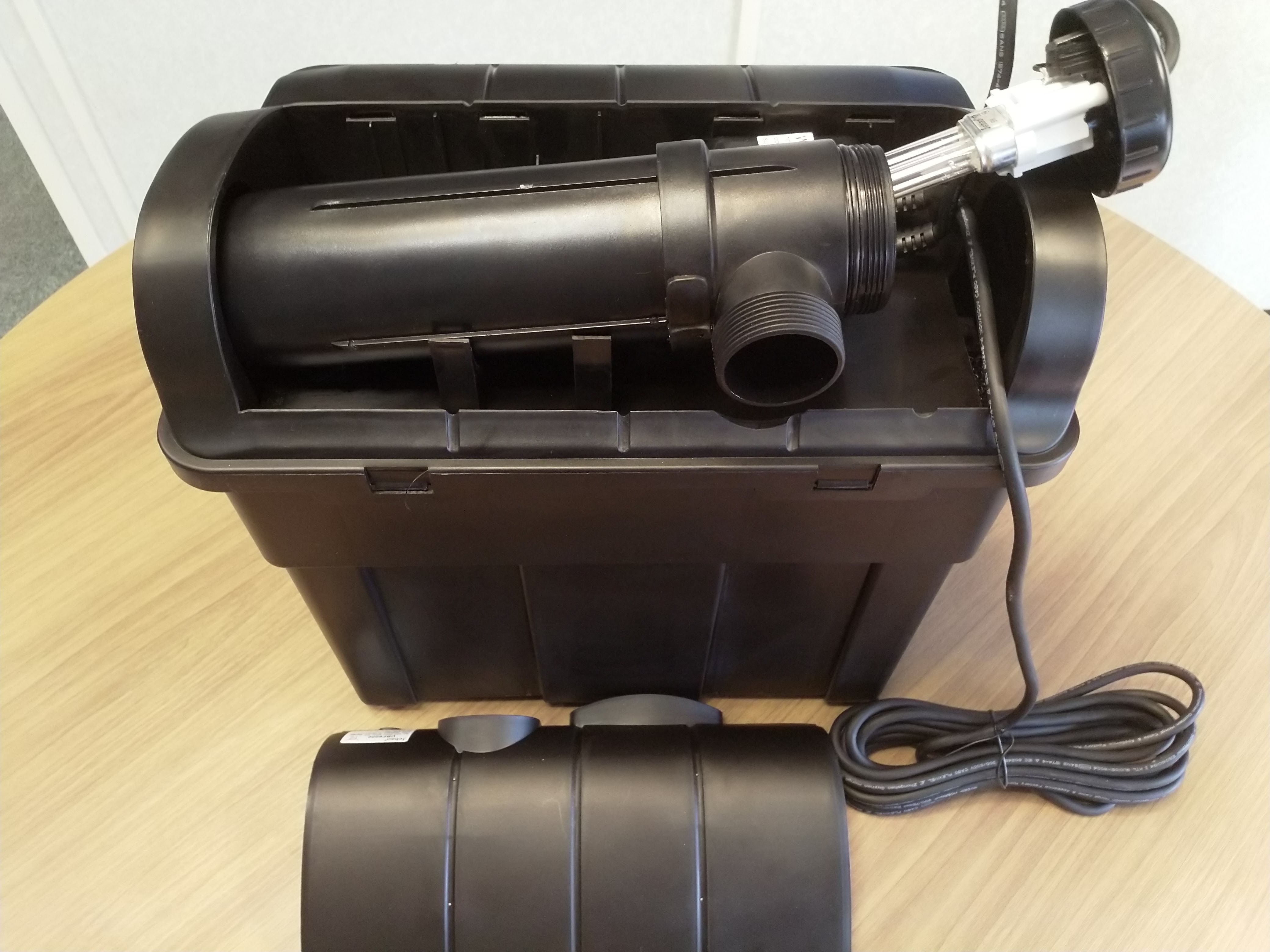
- First of course, unplug you filter and turn off any connected pond pump to stop the water flow.
- Remove the 'little cover.' This is a kind of semi-circular hatch at the very top of the filter that covers the housing for the UVC, ( shown in the image above at the bottom of the picture - also see instructions/owners manual for ilustration).
- You will see a black cylindrical housing that is simply clipped in to the top of the unit. You will need to slide this to one side, and then will be able to lift the whole cylinder upwards and out of the unit.
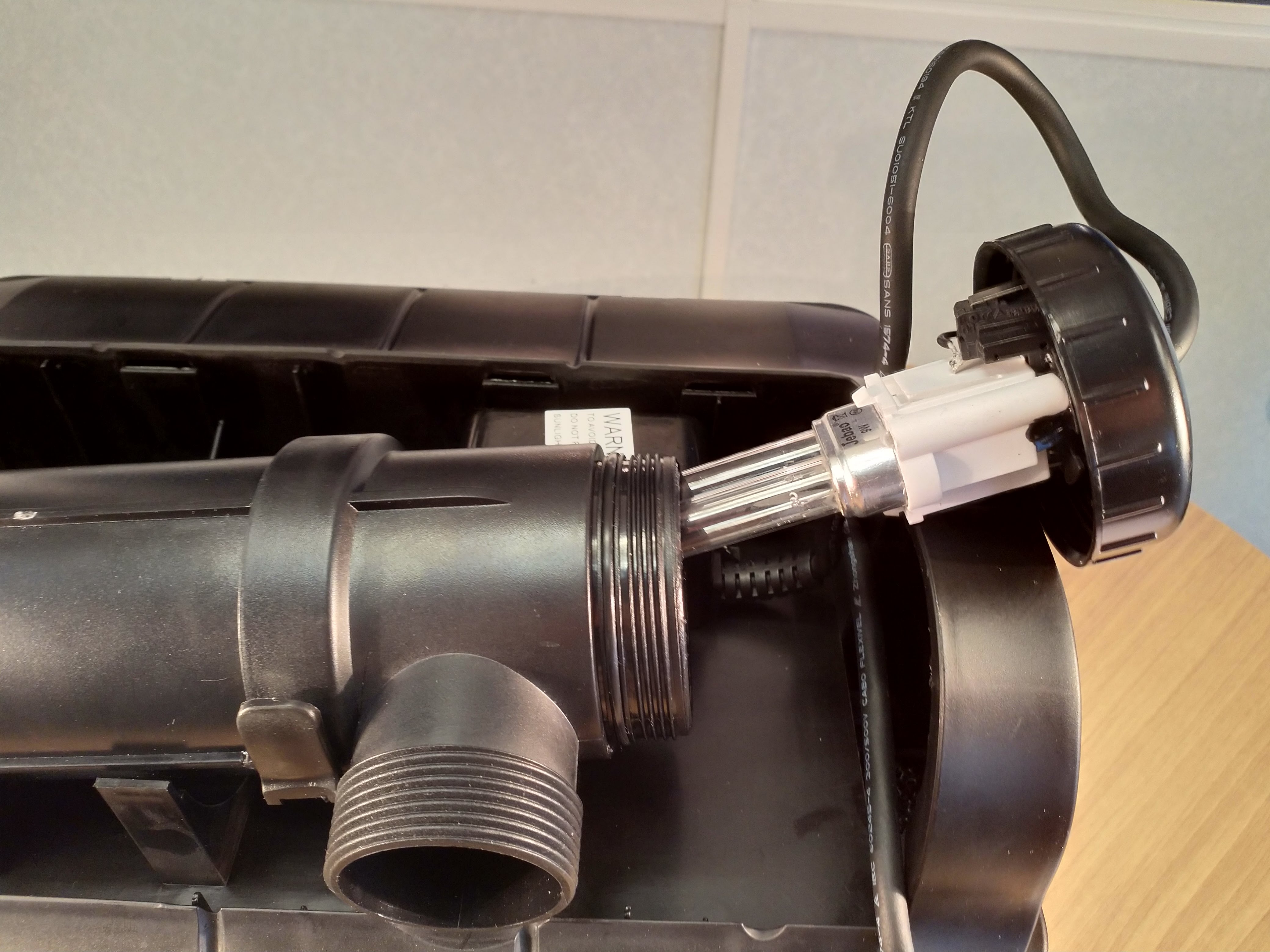
- Next unscrew the end of the cylinder (the end with the cable attached) and then slide the bulb out of the housing.

- You can now remove the old bulb. Make sure you always use a clean cloth, piece of kitchen role or similar when handling UV bulbs, as touching a UV bulb without using a cloth will cause grease to be left on the bulb itself, this grease can be heated by the UV radiation and cause the bulb to crack.
- Replace the bulb by simply pulling out the old one and inserting the new replacement.
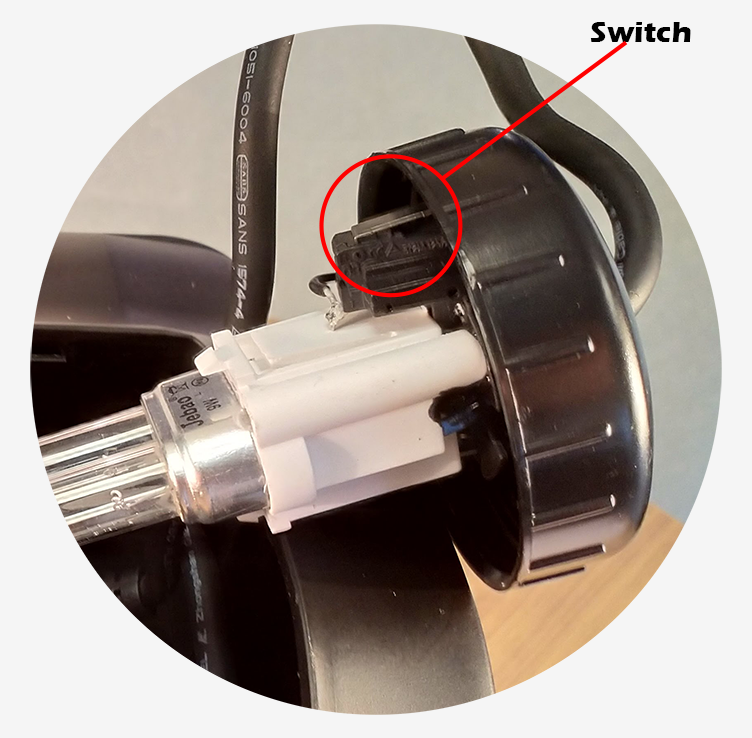
- At this stage if you like, you can check that the UV bulb is working by switching on the power. However be sure to also press the metalic switch highlighted in the image, inwards. When the unit is reassembled this switch will be pressed in by the housing, but if you are testing the bulb when it is not inserted back in to it's housing the bulb will not work unless you press this button in. Caution: If you do decide to test the bulb be sure not to look directly at the UV bulb as this could potentially be damaging to your sight.
- Next just seal the unit fully back up, and you're all set.
Changing Your UV Bulb (PondKraft Box Filter - Older Version)
Changing the bulb on your PondKraft box filter (older version - pictured below) is very simple. You will notice on the lid of the filter there is a handle which pulls up the lid of the PondKraft unit and allows you full access to the UVC unit. You will now simply be able to unscrew the end where the electrics are fed into the unit and this will give you access to the bulb as shown in the picture below. You can now remove the old bulb. Make sure you always use a clean cloth, piece of kitchen role or similar when handling UV bulbs, as touching a UV bulb without using a cloth will cause grease to be left on the bulb itself, this grease can be heated by the UV radiation and cause the bulb to crack. Replace the bulb by simply pulling out the old one and inserting the new replacement. Next just seal the unit fully back up, and it's ready for another season.

Mechanical Filtration Foams And Biological media: The foams that are contained within the PondKraft Filter box are very thick, and this means they have a massive surface area for the removal of solids sent to your filter from the filter pump in your pond, depending on the model you will have two or three foams with different densities. These solids will contain fish waste, uneaten food, decaying plant matter, pollen and dust to mention a few, left to stew in the bottom of your pond would mean not only a massive amount of toxic gases, but a potentially dirty stagnant pond. This stops the biological media from becoming blocked up and if you combine this with regular cleaning of your filter foams (make sure when cleaning the foams never to use tap water, always remove the foam filters and clean them in a bucket of pond water), this can create far less work for your friendly bacteria and this in turn means a more oxygenated pond.
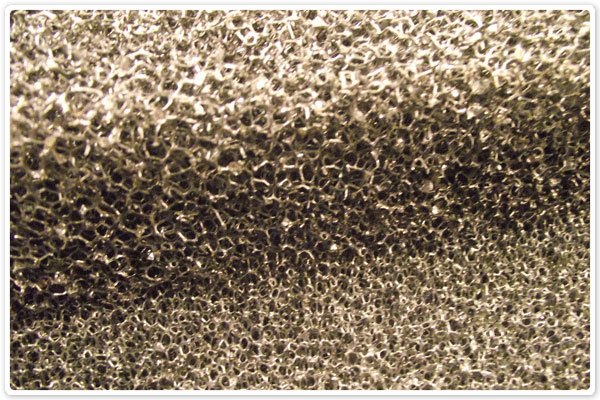
The biological filtration contained within the PondKraft like previously explained is to help the nitrogen cycle by turning the ammonia into nitrate (plant food). An example picture of how these look can be seen below, and they are located in the bottom of your PondKraft. The biological media should never be cleaned out in summer spring or autumn and should only be placed into a bucket of pond water and ruffled around, never allow the biological media to come fully into contact with tap water as it will kill all the bacteria that has cultivated on them.
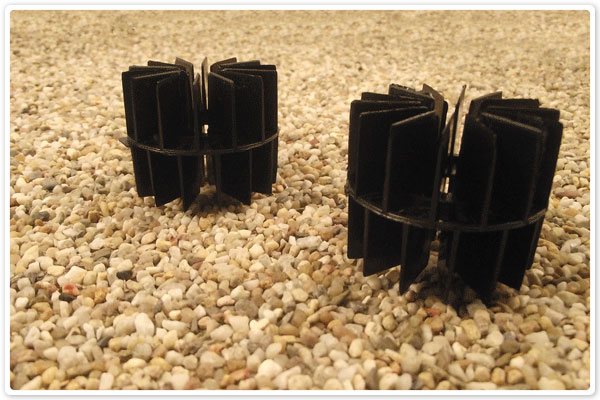
Sludge Drain and Partial Burying: Having a sludge drain at the bottom of the filter can be handy if you are worried that the biological media has become to fully covered in sludge, but if you are in the middle of the season it's not advisable to fully wash out the biomedia. So if you open the sludge drain and allow the dirty water to run out and then reattach the blanking cap this will help to keep your filter running at its optimum efficiency. If you are partial burying the PondKraft box Filter that is fine, but remember that the sludge outlet will also be buried. If you are burying the filter make sure that the water still drops out via gravity from the filter down your waterfall or straight back into the pond. The sludge drain outlet can be seen below. (Not on the 18000 & 25000 models).
